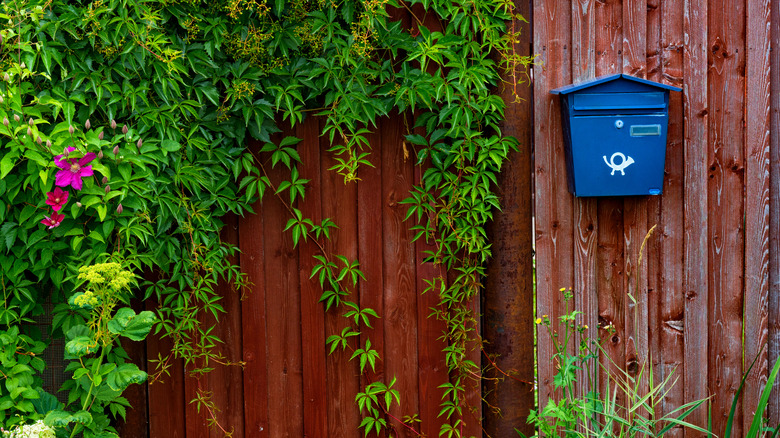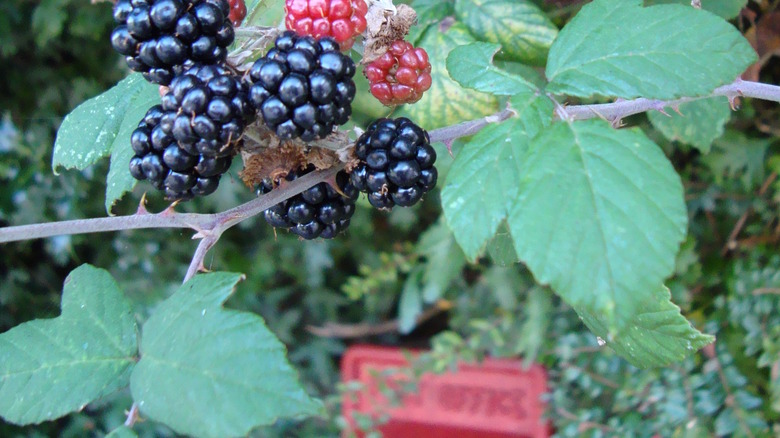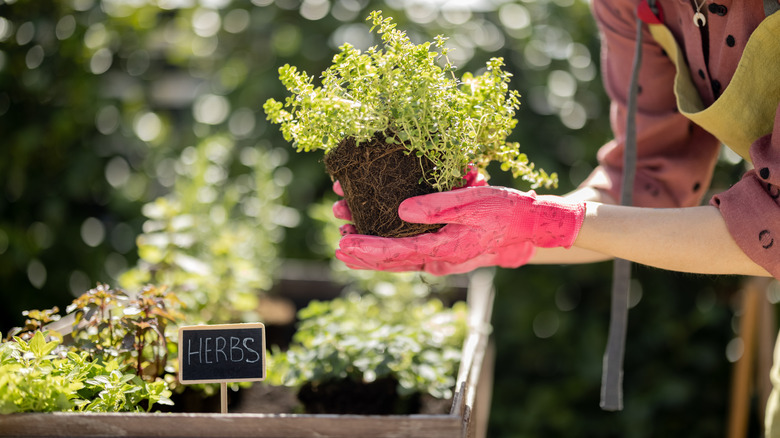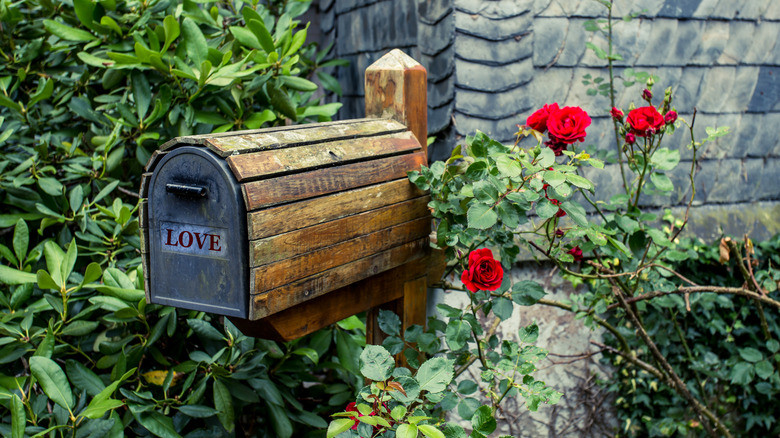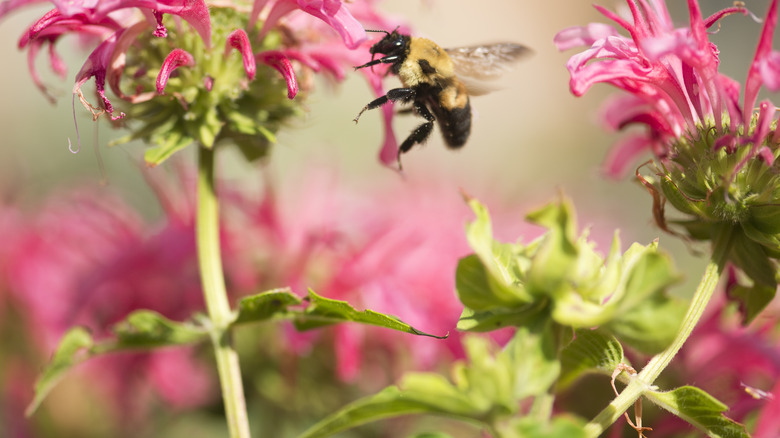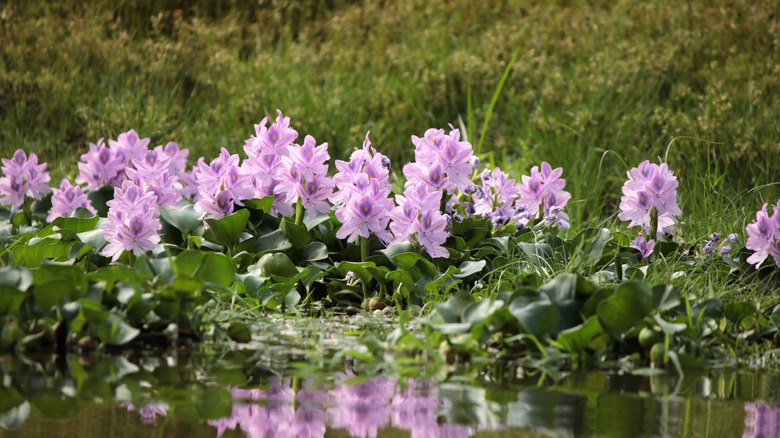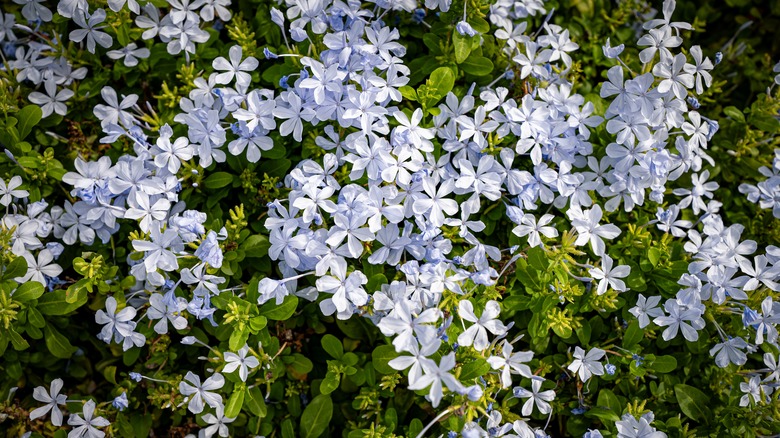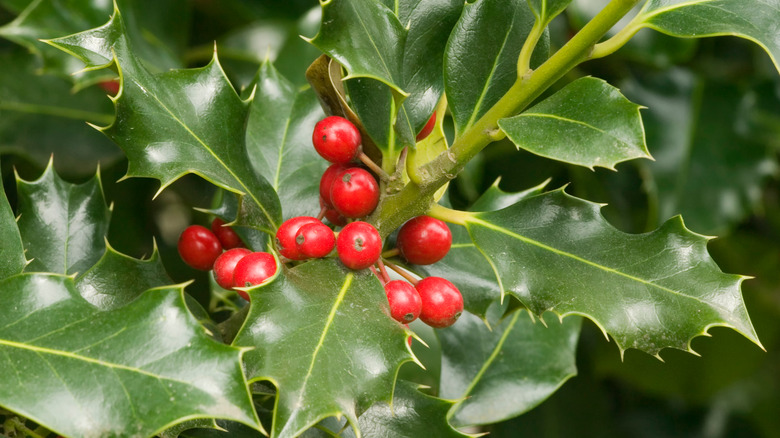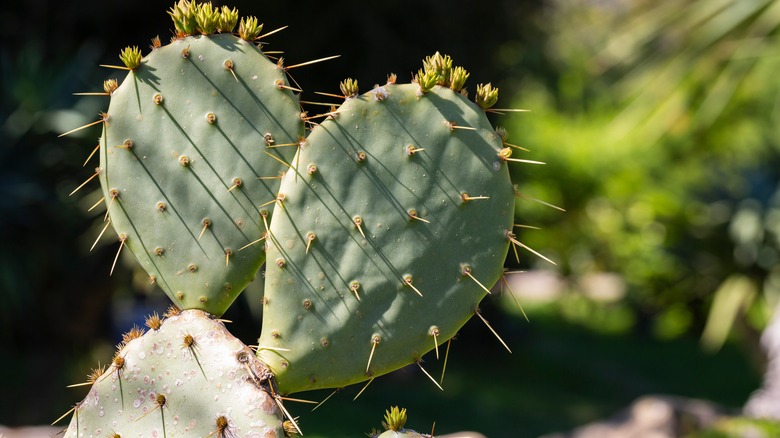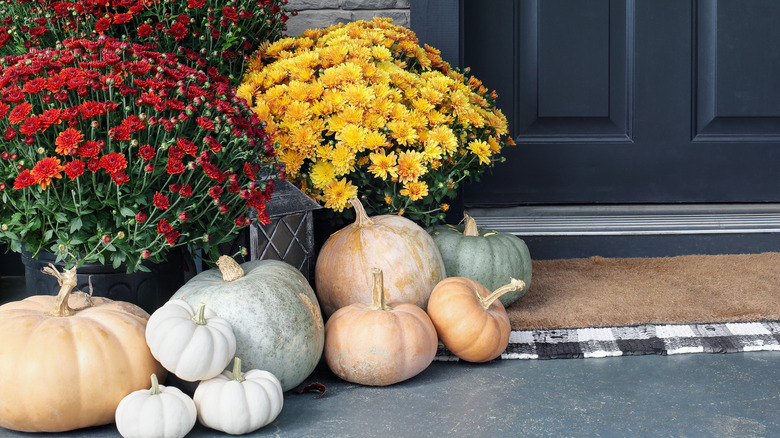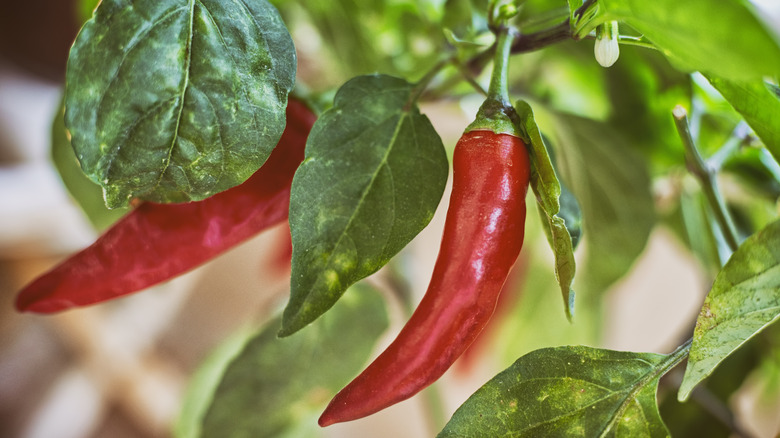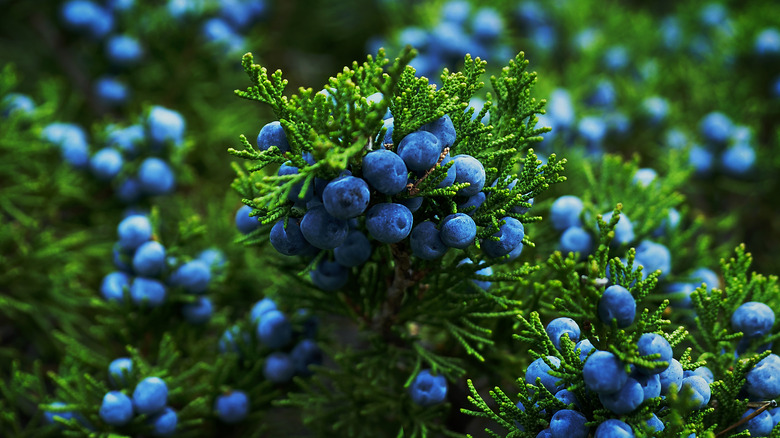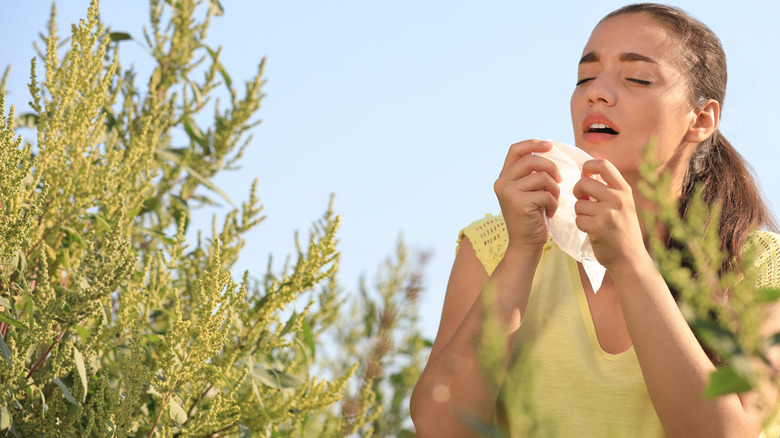12 Plants You Should Avoid Growing Around Your Mailbox At All Costs
When it comes to landscaping around your mailbox, the choices you make can significantly impact not only the aesthetic appeal but also the functionality of your outdoor space. A vining shrub can shroud your garden in a romantic air, a well-managed hedge can make you the talk of the block, and some plants may even help ward off pests. While adorning the area with lush foliage and vibrant blooms may be tempting, not all plants are suitable companions for this premier location. Selecting the wrong flora can lead to a host of issues, from obstructing mail delivery, causing injury, and attracting the wrong kind of visitors to the yard.
At this point, you probably know well enough that you should avoid planting the usual suspects, such as poison oak, poison ivy, or stinging nettles. However, a host of other plants, many beloved by gardeners, can cause major issues when growing next to the mailbox. Unless you want to become your mail carrier's least favorite house on the block, don't make the mistake of planting these near the post box. Here's the photo guide to help you learn which plants are best avoided when planting near your mailbox.
1. Blackberry bushes
Blackberries (Rubus fruticosus) make a delicious summer snack, but the plants can be nightmarish to manage in the yard, especially in close proximity to your mailbox. For one, blackberry bush vines are covered in razor-sharp thorns that nobody wants to brush up against. Additionally, they have invasive, rambling, deep-growing roots that can disrupt your lawn, landscaping, cement, and yes, your mailbox. So, if you like the general location of your mailbox (and sidewalk), avoid planting any blackberry plants too close to them.
2. Fragrant pollinator-friendly herbs
Many herbs are dream plants for beginners because they are easy to maintain and cultivate, and you can use them in practically every dish. Herbs are known for attracting pollinators, especially aromatic herbs, and ones that flower, such as basil, cilantro, and chives. While this is great for the health of your garden (and the planet), it can also bring some of our stinging insect friends a little too close for comfort. Bees, hornets, and wasps are the last insects you want to encounter when grabbing the daily mail.
3. Roses
As the cliche goes, every rose has its thorn, and in the case of your rose bush (Rosa spp.), it has lots and lots of thorns. Yes, roses come in many stunning colors, and each is just lovely to look at, but if you plant them in a high-foot-traffic area, it becomes more likely that you'll be scraped by one. And, because many rose plants are vining shrub varieties, they can quickly sprawl far beyond their original area, so be sure to plant them a reasonable distance from the post box.
4. Bee balm flowers
For reasons similar to herbs, be sure to keep bee balm (Monarda spp.) away from the mailbox. Bee balm, as you might guess from the name, is one of the best bee magnets for the garden. The bright pink petals attract bees, and the large, open umbrella flower makes it easy for them to land and pollinate — again, if you want to avoid being stung by one of these helpful insects, keep the plant in the backyard, well away from the mailbox. And if you do plant it, learn how to prevent bee balm from taking over your garden, as it can grow like a weed.
5. Water hyacinths
Water hyacinths (Eichhornia crassipes) are absolutely stunning and exude tranquility and calm. However, sadly, thanks to their preferred habitat of plentiful standing water, they are a major magnet for mosquitoes. Because you have to linger around the post box to gather your mail, those mosquitoes will have plenty of time to feast, leaving irritating welts behind. So, avoid planting water hyacinths and other plants that require water-rich growing environments. If you live in a wet area and can't seem to keep your soil dry enough to ward off mosquitoes, lemon verbena is a natural mosquito repellant, and you won't regret planting it next to your mailbox.
6. Leadwort flowering shrub
Originally a tropical-growing shrub, leadwort (Plumbago spp.) is a popular flowering plant often found in American Southern gardens. Delicate periwinkle flowers grow out in huge mats, making for a gorgeous addition to the garden. Unfortunately, almost every part of this plant can cause skin irritation, including the sap, stems, and roots. And unlike other irritating plants, such as poison oak or ivy, it's not as easy to identify thanks to its inconspicuous-looking flowers. Do your mail carrier a favor and avoid planting leadwort too near the mailbox and pathway, especially during shorts season.
7. Holly bushes
You probably best know holly (Ilex opaca) as a winter holiday plant, mainly used as a little decor accent. A lot of the time, though, folks use fake versions of this plant. One of the major reasons? Those gorgeous splayed leaves are as sharp as a razor and can easily cause painful cuts. Not only that, despite being an evergreen plant, holly bushes shed these leaves on the ground, which is something you definitely want to avoid if you tend to go outside barefoot.
8. Prickly pear cactus
This may seem obvious, but avoid planting the prickly pear cactus (Opuntia basilaris) or other cacti with sharp spines anywhere near your mailbox. Not only do these spikes hurt very badly to rub up against, but they also separate from the plant and get lodged in whatever they come in contact with, whether that's skin or clothing. While you probably already know to plant these away from the mailbox, you may be surprised to learn that these cactuses grow several new paddles each year and can easily sprawl far beyond their original location. So, consider that when picking a spot in the yard for them.
9. Chrysanthemum
Chrysanthemums are cold-hardy flowers that are very popular as potted plants during the fall months. Though the flowers themselves don't typically cause any issues, they do have a phytochemical compound, Alantolactone, located in their sap. This compound can cause skin irritation and sensitivity to sunlight–pretty much the last thing you want as a mail carrier who spends all day outside. If you have a porch-mounted mailbox, be sure to plant the chrysanthemums in another spot on the porch and avoid putting them along the steps or walkway.
10. Chilli peppers
Whether you love growing sweet peppers as an easy healthy snack or the hottest chilies for a gorgeous salsa–both members of the Capsicum genus–the plants can be really unpleasant near the mailbox. You're probably aware you shouldn't handle spicy peppers with your bare hands, but did you know these plants can also secrete an irritating sap? Not only can it cause a pesky rash, like other plants, but it can also cause blistering. So, while you definitely don't want these near the mailbox path, be sure to handle them with care no matter where you plant them in your garden.
11. Juniper shrubs
Juniper (Juniperus communis) is a stunning evergreen conifer with branches full of bright green sprigs and fruitful violet-blue juniper berry clusters. It also happens to be a plant that can grow far and wide, which is why we don't recommend it as a mailbox-compatible shrub. You'd need to prune your juniper consistently to prevent it from obstructing access to your mailbox. Additionally, an unsuspecting mail carrier or visitor may think the juniper berries are blueberries, given their similar appearance, but some juniper berries can cause illness–another good reason to keep these away from the mailbox and front garden.
12. Ragweed
You're probably pretty used to having seasonal allergies in the springtime, but if you find yourself reaching for your handkerchief and allergy pills in the fall, the culprit is likely ragweed. Ragweed (Ambrosia artemisiifolia) is a part of the aster family. Though it typically isn't intentionally planted, given its reputation for causing allergies, it can spread easily. It may be in your yard without you realizing it–this is bad news for you and your mail carrier. Learn how to identify and remove ragweed from your mailbox's pathway and enjoy a sneeze-free yard.
